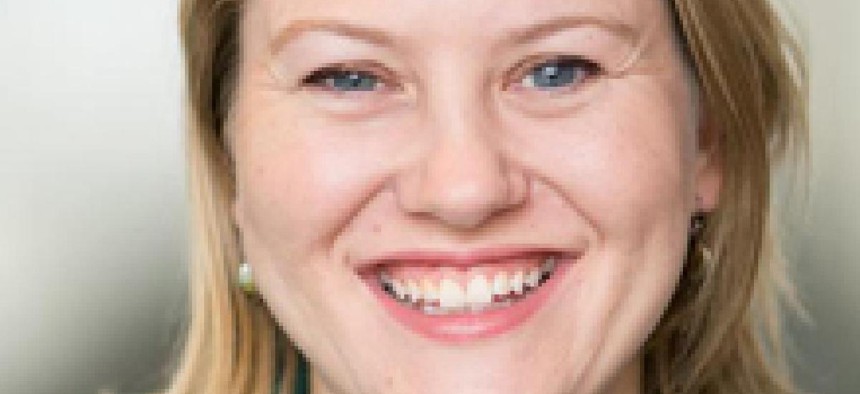Laura Larrimore

Senior Digital Strategist, U.S. Patent and Trademark Office

Public-facing platforms can go beyond facilitating transactions to offering agencies the opportunity to connect with Americans in a more meaningful way.
At the U.S. Patent and Trademark Office, “we want to express humor and to let the public know there are people who are behind the scenes,” said Paul Rosenthal, USPTO’s acting chief communications officer.
Laura Larrimore is a linchpin of those efforts. When it comes to coordinating digital communications, launching creative messaging campaigns and handling website governance, “Laura is an absolute rock star,” Rosenthal said.
She spearheaded the “People of PTO” social media campaign — similar to the “Humans of New York” viral hit — to showcase the human side of those who handle intellectual property. And she tapped into the agency’s vast archive of patent applications for the #creepyIP campaign to spotlight creative (and spooky) intellectual property throughout the month of October.
“If it’s nerdy and strange, our agency is usually pretty into it,” Larrimore said.
Other people have also taken notice of her skills. The Commerce Department, USPTO’s parent agency, asked that Larrimore take a lead role on the social media handoff during the recent presidential transition, Rosenthal said.
For the first time, outgoing political appointees’ social media accounts had to be retired and new ones created for incoming staff to use on Day One of the Trump administration.
There were no established procedures for the digital side of a presidential transition, so “we kind of had to make a precedent,” Larrimore said.
“The goal for us as communication professionals was making sure whoever comes in has the tools to communicate whatever it is they want to [convey],” she added. “That really results in good government because what you want is people communicating.”
She also created guidelines for future transitions, keeping transparency in mind. And because agencies across the government were encountering the same issues, she brought together colleagues to discuss their challenges and worked directly with Twitter and Facebook to ease the transition.
“What’s important to me is how we can make things better across the federal government,” Larrimore said. “The idea of sharing innovation so other people can say, ‘That’s a good idea, I’m going to top that now,’ is very important to me.”
NEXT STORY: Can the Army sell Congress on modernization?





